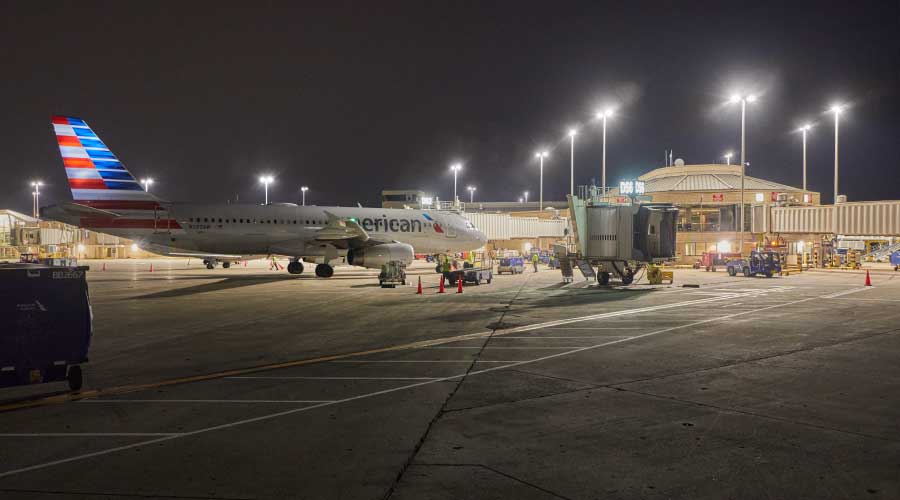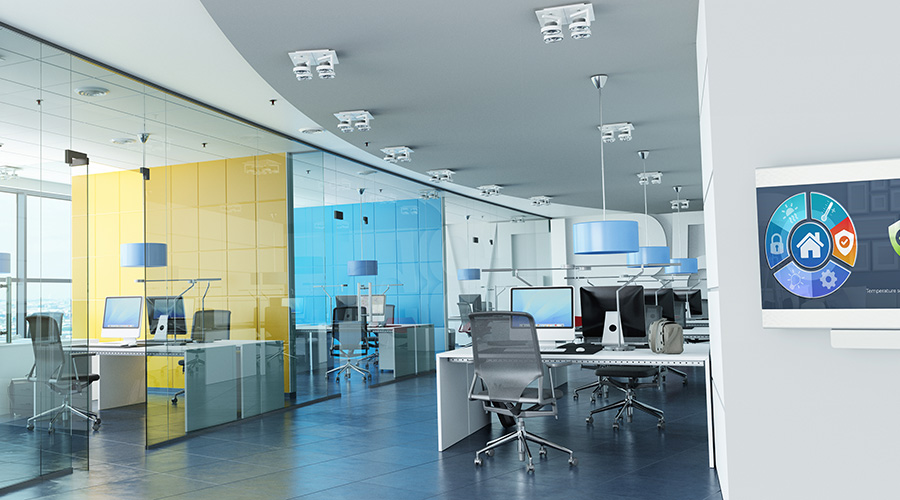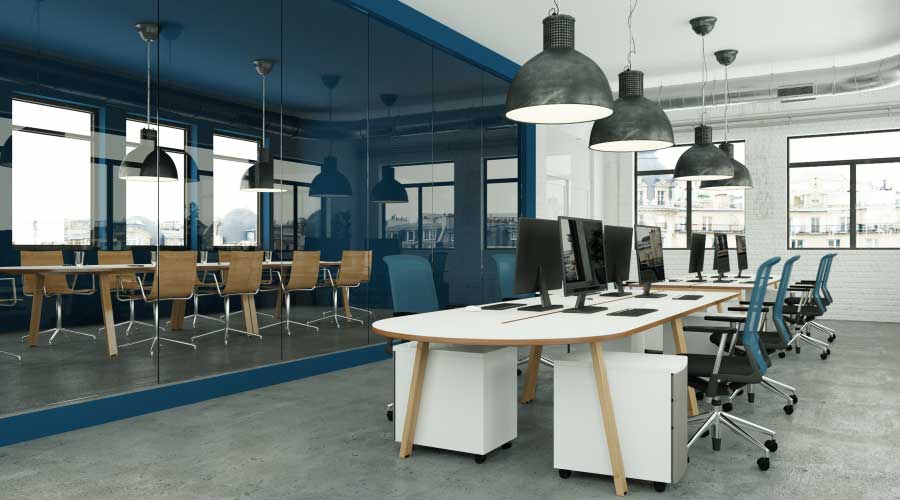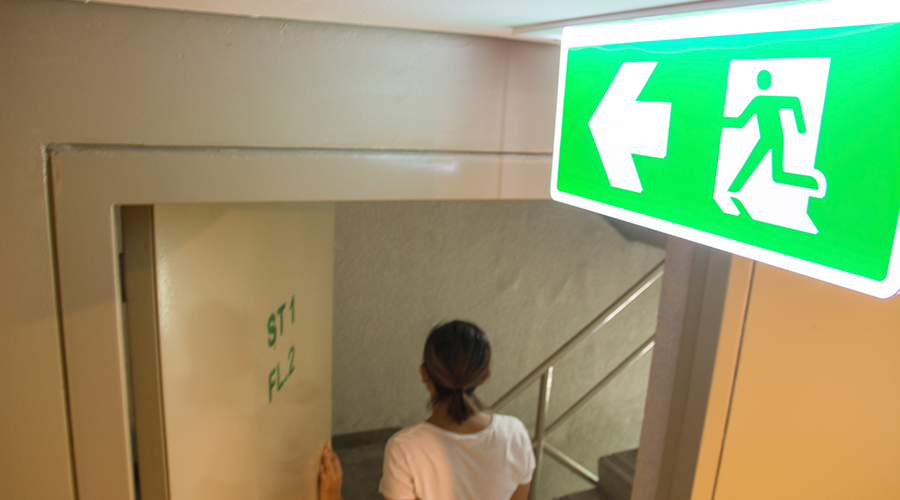Milwaukee Airport's LED Lighting Upgrade Illuminates Savings and Safety
Small project paves the way for expanded program of LED installations in key exterior areas of Milwaukee Mitchell International Airport.
By Dan Hounsell, Senior Editor
Good things come in small packages, they say.
In the case of lighting system upgrades at Milwaukee Mitchell International Airport, the small package in question was a retrofit of lighting in an adjoining office park. That project paved the way for a range of good things, including energy and operations savings for the organization and enhanced safety for airport passengers and in-house staff.
Betting on benefits
Milwaukee Mitchell International Airport, the largest airport in Wisconsin and the only airport in the state with service from all the major domestic airlines, expects to host about 6 million passengers in 2023. As in many large organizations, airport officials had been looking for opportunities to control costs and reduce their facilities’ environmental impact. For Dale Hardy, electrical supervisor for the airport, lighting system upgrades presented such opportunities.
Specifically, Hardy says he saw potential benefits in replacing the existing high-intensity discharge (HID) lights on the airport’s tarmac and metal halide (MH) roadway lights with LED luminaires. To ensure such upgrades could deliver the intended benefits, Hardy needed proof.
The idea of a broad LED upgrade program “backed up from a project a year before at our MKE business park,” he says. “Our engineering department had done a rewiring of an electrical system. They added a bunch of these lights around the roadway, and we really liked the look and light distribution of the lights at that time.
“That's when I reached out to a local distributor to give me an idea of how we could produce more light out on the tarmac area. That's where our first project developed, and we went ahead from there.”
The improved light distribution and quality of lighting demonstrated by the upgraded office park lighting allowed Hardy to bring the LED technology to more critical areas of the airport. All told, the program of upgrades installed 575 fixtures in: the tarmac areas for two concourses; employee, cab and remote parking lots; terminal loading docks; maintenance, fleet and electrical buildings and poles; and the parking structure’s entrance and canopy pay station.
“This all developed basically around our tarmac area where planes park and passengers get on and off the planes,” he says, adding that evolving technology provided another reason to consider replacing the existing lighting. “We were having a hard time getting the HID lighting replacement ballasts for them, and they're telling us the lamps are starting to get obsolete, as well. It started out in that area, to change those lights into LED, giving us more efficient light and more cost savings as far as operational cost.”
Once the LED fixture installations were completed in the tarmac area, the upgrades expanded beyond structures to surfaces.
“We moved over to our roadway pole lighting, which are the entrance and exiting sides coming into the airport, along with our employee parking lot lighting,” he says. “Then we had our surface parking lot on the south end of the airport that needed to be upgraded, as well. They had the old (high-pressure sodium) yellow lighting technology, which made it very dark and dim and very unsafe. We upgraded those, as well.”
From the terminal and nearby surfaces, Hardy and his team then turned their focus to additional buildings on the campus.
“We worked our way into other outbuildings throughout our airport,” he says. “We had our highway and fleet and self-maintenance combined facility. We changed all the exterior lighting on that, as well. We also had Super Saver Lot A, which is on the west side of the airport for a remote parking lot. We changed all those, as well, because that also had the old high-pressure sodium lighting.”
Driving the decision
Sustainability and energy savings were not the only considerations in the decision to upgrade to LED luminaires at Milwaukee Mitchell International Airport. The quality of the lighting also was a factor that drove the decision.
“It started out as a small project, but as we got to see the lighting advantage of the Optec fixtures and the crisp white light that we got out of it, they decided to move forward and do it throughout the exterior sides of the airport,” Hardy says. “That was our main thing: Let's get an equal amount of light distributed along the light fixtures because with the HID technology, it was too hit and miss. You’d get one that's super bright and one that was not as bright, and it didn't give us a nice, clean look.”
Additional factors in the upgrade decision included even more practical but critical matters.
“There was the safety factor for the airlines and the safety of the workers out there on the tarmac who are moving their baggage carts around or fuel-servicing operations,” Hardy says. "The prime example was the yellow lighting in Surface Lot A. We put the new LED technology in there, and now you go there at midnight or 1 o'clock in the morning, and it's almost daylight. Passengers can get to their car safely. It’s much easier for them and for our snow team operations if they're out there at night. They can see what they're doing without hurting their eyes trying to find stuff and working with flashlights.”
The impact of aging fixtures on maintenance also came into play.
“It was also a combination of supply issues and saving energy on our electric consumption,” Hardy says. “Plus, now we're talking about less maintenance in terms of us fixing the old lighting during the winter months when it's cold. A lot of times, the older fixtures or bolts are rusted and corroded, and we can't get them open. That creates a little more time working on the fixtures.”
Hardy says the decision on which manufacturer and products to use came as a result of a side-by-side comparison.
“We used another manufacturer a couple of years ago, and we compared the two fixtures apples for apples,” Hardy says. “The Optec fixtures went up a lot easier, and they were built a lot better, stronger, more durable.”
Hardy says he anticipates the airport will see a return on its investment in the upgrades in just a few years and will realize lighting energy savings of more than 50 percent.
What comes next
As Hardy makes plans for further LED upgrades at the airport, Hardy says he is confident his in-house staff of 10 master electricians — including Hardy — can handle the workload just as they did with previous projects.
"I did not have any hand in the installation of this product, but our electrical team is very capable of doing it,” he says. “I had their assistance in getting these installed correctly instead of hiring a contractor to do it. We have the time and talent here to do it. My guys enjoy it, as well, because they get to see the benefits of the light once it is up and done. I hear from a lot of airlines and passengers that they appreciate the extra light. And it saves our company a lot of money by not having a contractor do it.”
The interior upgrades will add about 200 fixtures and are likely to present challenges that the exterior work did not.
“The exteriors were a lot easier because there were a lot more areas that are more easily accessible,” Hardy says. “Now that we’re moving inside to the terminals area and the concourse areas, there can be disruptions of passenger flow. We don't want to be in their way when they're coming through.
“They’ve already got a lot on their mind getting to their planes and making sure they’re on time. We don't want to add to that by parking in their seating areas and working on the light. We might have to work oddball hours at night so we're not inconveniencing the airlines or the passengers by being in the way.”
Hardy says the interior lighting projects will involve removing the ballast from the existing fixtures, connecting power to the lamp sockets and installing LED lamps. This approach retains the existing décor and keeps costs down by avoiding the purchase of new fixtures.
“We are hoping in the next year or two that we can work on changing and updating the fluorescent lighting in our terminal areas, concourses C and D,” he says. “We’re changing out a lot of the fluorescent lighting around the seating areas where the passengers are waiting to depart. We're converting that to LED lamps, as well, and not so much changing the fixtures, so it's an easy retrofit.
“This gives a more even light, and it keeps our energy consumption down a lot compared to the fluorescent technology. Those drivers and ballasts create a lot of heat. So now you're talking about summertime heat, and you’ve got the air conditioning trying to bring the temperature down for passengers. We're hoping this will reduce a lot of that wasted energy, as well.”
Lighting upgrades also might expand to include the airport’s baggage claim areas.
“We just had our supplier this week reach out to us because we do have a lot of fluorescent lighting in our baggage claim area, and they informed us that their fluorescent technology with ballasts kits are starting to become obsolete,” Hardy says. “I don't know if it's being driven by supply and demand or if it's the green technology of the LEDs. We're getting ahead of the curve and getting ahead of everybody else and making it more efficient for our electric bill and safety of our passengers.”
Dan Hounsell is senior editor for the facilities market. He has more than 30 years of experience writing about facilities maintenance, engineering and management.
Related Topics:












